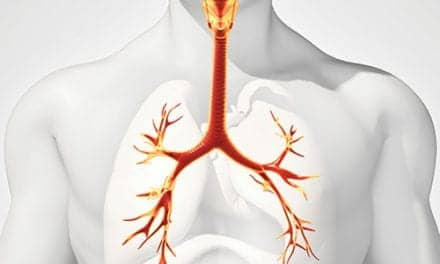Stem cell experts have found three pathogenic stem cell variants in the lungs of patients who suffer from COPD, according to a study in the journal Cell.
Researchers say these stem cell variants drive key features of the disease: overproduction of mucins, tissue fibrosis, and inflammation.
“We actually found that three variant cells in all COPD patients drive all the key features of the disease. One produces tremendous amounts of mucins which block the small airways, while the other two drive fibrosis and inflammation which together degrade the function of the lung,” said Wa Xian, research associate professor of the Stem Cell Center. “These patients have normal stem cells, though not many of them, but they are dominated by the three variant cells that together make up the disease,” she said.
Xian and Frank McKeon, professor of biology and biochemistry and director of the Stem Cell Center, used single cell cloning of lung stem cells to make their discovery. Over the past decade, they developed technology for cloning stem cells of the lungs and airways and have been at it since, noting that different parts of the airways give different stem cells, related but distinguishable.
“It’s quite remarkable,” said McKeon. “In the deep lung, the distal airway stem cells gave rise to both the distal tubes and the alveoli and our research indicates those are the stem cells that make it possible for lungs to regenerate on their own.” Xian and McKeon discovered lung regeneration in 2011 in their studies of subjects recovering from infections by an H1N1 influenza virus that was nearly identical to that which sparked the 1918 pandemic.
Xian and McKeon found that, in contrast to normal lungs, COPD lungs were inundated by three unusual variant lung stem cells that are committed to form metaplastic lesions known to inhabit COPD lungs, but seen by many as a secondary effect without a causal link to the pathology of COPD. After the team’s postdoctoral fellow, Wei Rao, transplanted each of the COPD clones into immunodeficient subjects, the team found they not only gave rise to the distinct metaplastic lesions of COPD, but they separately triggered the triad of pathologies of COPD including mucus hypersecretion, fibrosis and chronic inflammation.
“The long-overlooked metaplastic lesions in COPD were, in fact, driving the disease rather than merely secondary consequences of the condition,” said McKeon.
Now that the team knows the identity of the cells that cause inflammation, fibrosis and small airway obstruction, they are hard at work screening them against libraries of drug-like molecules to discover new therapeutics.









